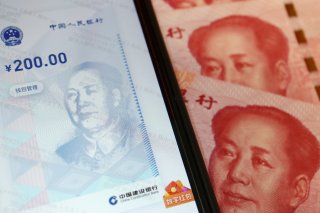Digital Currencies: A Building Bloc for Chinese Regional Power?
In the race to digitize the world’s major currencies, China will secure greater influence within the yuan bloc.
It is also true that the Fed’s structure could pose the biggest obstacle to minting a digital currency. Digital dollars and central bank accounts have consequences for central bank independence. After a year when the Fed’s market support, municipal lending, and climate consciousness were cast as egregious mandate expansion, policymakers must motivate politicians wary of a larger Federal Reserve by appealing to a competitive stance on China.
In announcing its digital currency, China has called for interoperability, promised anonymity, and insisted on its use for foreign exchange, while at the same time pursuing territorial expansion, purloining foreign technology, and weaponizing trade. In engaging with China, U.S. policymakers must insist that China separate the PBOC’s monetary policy from the political objectives of the CCP. With waning power to levy sanctions, the United States must also provide a secure, efficient alternative to a Chinese payments system.
In 2028, when the United States hosts the Summer Olympics, China is projected to be the largest economy in the world. In the absence of its own digital currency, U.S. calls for independence of monetary policy and interoperability between currencies will sound to China more like flexing hegemony than a sincere push for efficiency, security, and interconnectedness. That may be enough for China to secure the regional influence it desires.
Carey K. Mott is an International & Domestic Markets Associate at the Federal Reserve Bank of New York. He is the 2021 Economics Fellow for Young Professionals in Foreign Policy (YPFP). The views expressed are his own and do not necessarily reflect those of the Federal Reserve Bank of New York.
Image: Reuters.

